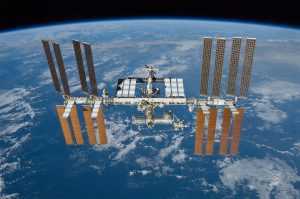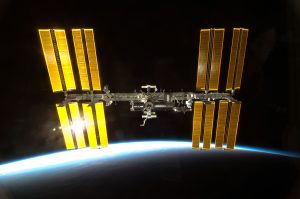Just a quick post here that all the information (including slides and videos) from a really interesting CASIS sponsored workshop are online. The topic relates to the most extreme built environment to date… the International Space Station. The workshop was called “Exploring the Microbiome/Immunome and Disease on the International Space Station” and took place back …
Microbes indoors Review: Microorganisms in Confined Habitats: Microbial Monitoring and Control of Intensive Care Units, Operating Rooms, Cleanrooms and the International Space Station – Maximilian Mora – Frontiers in Microbiology (OA) Indoor environments, where people spend most of their time, are characterized by a specific microbial community, the indoor microbiome. Most indoor environments are connected to …
In parallel to the Alfred P. Sloan Foundation offer of two postdoctoral fellowships to study the microbiology of the ISS, NASA is also issuing a pair of postdoc fellowships on their end. The collaboration between Sloan and NASA is great to see, since there is significant overlap between their interests in this field. I’m really …
This is so awesome. The Sloan Program in Microbiology of the Built Environment is offering a pair of postdoc fellowships to work on the microbiology of the International Space Station. Summary of the call is below, the compete information packet can be downloaded here. And if that’s not cool enough, the next blog post is …
Just a quick post about the fact that researchers from the Jet Propulsion Laboratory (JPL) are sending radiation resistant (even radiation-loving) fungi for some experiments on the International Space Station (ISS). They are looking for changes that occur in microgravity after growth for 14 days on the ISS with respect to ground control strains. Very …
New papers on microbes and the built environment. Microbes and fermenting households Samples collected through the Second Annual San Diego Fermentation Festival: From Sample to Multi-Omics Conclusions in under 48 Hours – Robert A. Quinn – mSystems (OA) (…) Here, we applied a novel integrated omics pipeline for the analysis of human and environmental samples in under …
Our latest Project MERCCURI paper came out last week and so I figured I’d do a quick post about it here since it’s a good fit for the microbiology of the built environment. In short, we collected a number of bacterial strains from built environments on earth and sent them to the space station to …
Happy Holidays! As I already noted on my MicrobiomeDigest blog, the stream of scientific papers does not seem to take a holiday break, so I will keep on posting new papers here. Clean sweep Potential association of vacuum cleaning frequency with an altered gut microbiota in pregnant women and their 2-year-old children — Ekaterina Avershina …
This is the third of three posts about the planetary protection workshop I attended at NASA Ames from March 24-26, 2015. The first is here. I mentioned, in my last post on forward contamination, that reverse contamination is the primary concern for Planetary Protection (PP). In this context, reverse contamination refers to the transport of Martian …
After 9 months of technical delays, during which time our collection of frozen built environment microbes went around the earth every 90 minutes, we are finally getting growth data from the International Space Station (ISS)! Astronaut Terry Virts has been taking daily growth readings of our collection of 48 microbes and today (Friday) is …

